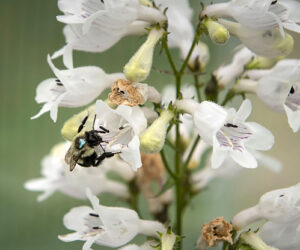
There is a clear visible difference between striated and smooth petal surfaces when the petals are viewed under microscopes: Hibiscus trionum (left) has microscopic ridges on its petal surface that act as diffraction gratings to reflect light, while Hibiscus sabdariffa (right) has a smooth surface, undated photo. Cambridge University scientists have proven that plants are able to regulate the chemistry of their petal surface to create iridescent signals visible to bees. (Edwige Moyroud, NewsX/Bee)

